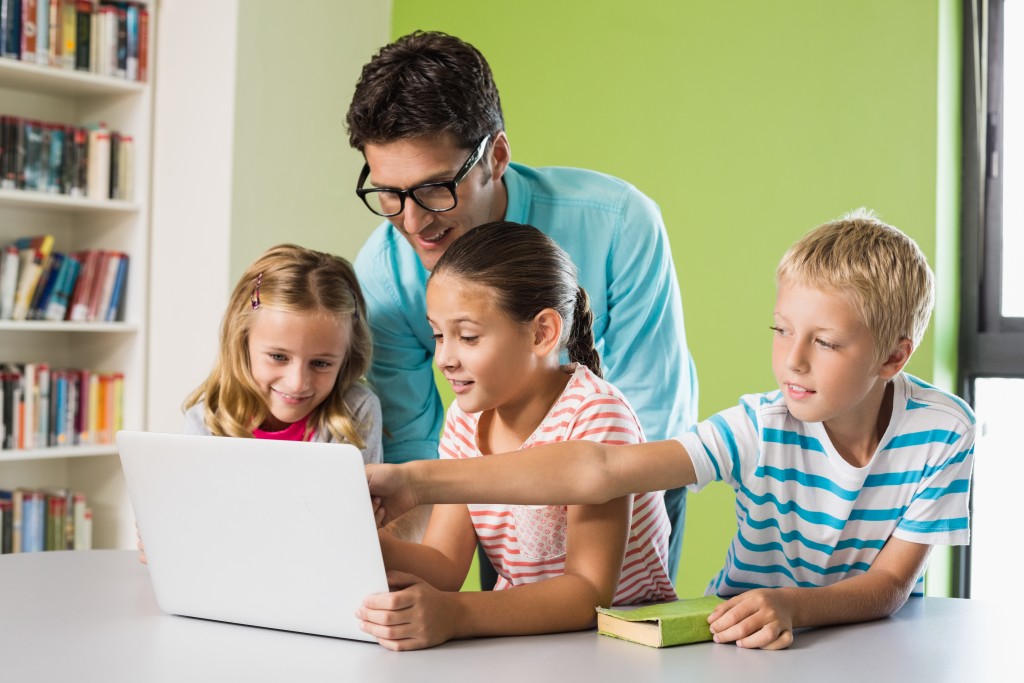In the past few months, schools and educational institutions have been incorporating remote and online learning as an alternative to face-to-face learning. However, most parents are still confused about what they should be doing in this type of situation. In some cases, parents won’t have the necessary equipment (laptops, tablets, and mobile phones) to teach their children.
How do we set up a feasible workspace that’s conducive to the learning process for our children? As parents, how do we oversee our children while they are learning?
Although a good majority of children aren’t able to concentrate on devices in the same way that older individuals can. Since it’s harder for them to learn without proper engagement, we have to ensure that they are correctly learning their lessons with too many distractions. What are some key strategies that we can do to ensure that our child is getting 100% concentration?
Is Remote Learning Effective?
Remote learning is a process of learning without students having to be in the same classroom to learn. Distant learning isn’t necessarily a new trend even in the past few years, especially in virtual classrooms and video conferencing platforms such as Zoom.
In several countries worldwide, remote or distance learning has become the norm, mainly when COVID-19 cases have caused most individuals to practice social distancing. However, there’s still an ongoing debate on whether remote learning is a feasible way of learning, especially when it comes to children.
Most parents that are for it would say that the process of learning should continue despite expending resources. However, others emphasize that there are children who cannot concentrate on their daily learning. In some cases, some families, especially those in developing countries, cannot afford equipment and connections for school.
But is remote learning effective? Studies have shown that remote learning affects the attention span of children. The average attention span of a person will also vary depending on their age. The older a person gets, the higher their attention span will be.
The average attention span of children and teenagers are as follows:
- Two years old: 4 to 6 minutes
- Four years old: 8 to 12 minutes
- Six years old: 12 to 18 minutes
- Eight years old: 16 to 24 minutes
- Ten years old: 20 to 30 minutes
- 12 years old: 24 to 36 minutes
- 14 years old: 28 to 42 minutes
- 16 years old: 32 to 48 minutes
It’s entirely known that most school schedules will have learning sessions of 1 hour or so. If these children do not get breaks between the allotted time they spend focusing on a lesson, they will eventually get stressed.
As such, most parents find the online learning set-up to be quite frustrating and sometimes lead to burnout in children. Thus, we should adjust our children’s method of learning.

Online Learning Pointers
Spice Up Your Environment
Sometimes, learning in the same workspace can cause more harm than good for some people. While it’s great that you want to get your child in the groove to learn, it’s still essential that they experience other things outside their lessons. You can spice up their day by breaking the monotony of being stuck at home.
Although most individuals are discouraged from leaving their homes, there are still communities free from contagious diseases. If this is the case, you might want to give your child a change of pace in his learning. Reward your child by taking them on a trip to somewhere they might want to go.
You might want to take them on a trip to their grandparents. Sometimes, elderly folks will get lonely and might feel neglected if left alone. We must give them some love and consideration by visiting them once in a while. There are also skilled nursing facilities that can provide them much-needed care while also having an interactive and engaging senior living community.
Let Your Child Have Options
Just because your child is learning doesn’t mean that they can’t have some fun while learning. You can let your child have control of how their work desk will look like. That is an excellent way of teaching them how to organize their belongings while concentrating on their work.
Remove Distractions
Last but not least, it’s essential to remove any form of distraction that might catch the attention of your child. You might need to “confiscate” several types of devices that will cause distractions in the teaching process.
In some cases, parents will use devices with parental control so that content that children see online is regulated.
Overall, remote and online learning can be a daunting task for most children, but it is possible. With these tips, it’s easier to regulate our children’s learning process while optimizing their concentration. Still, you might want to give your child some breathing space in between each lesson.
Ultimately, children should be out and about and experiencing the outside world with other children. They shouldn’t be forced to concentrate for hours on online lessons. Chances are, they will just get burned out and won’t be able to focus if their concentration will be “forced.” Thus, it’s essential to give them much-needed breaks in between lessons.

